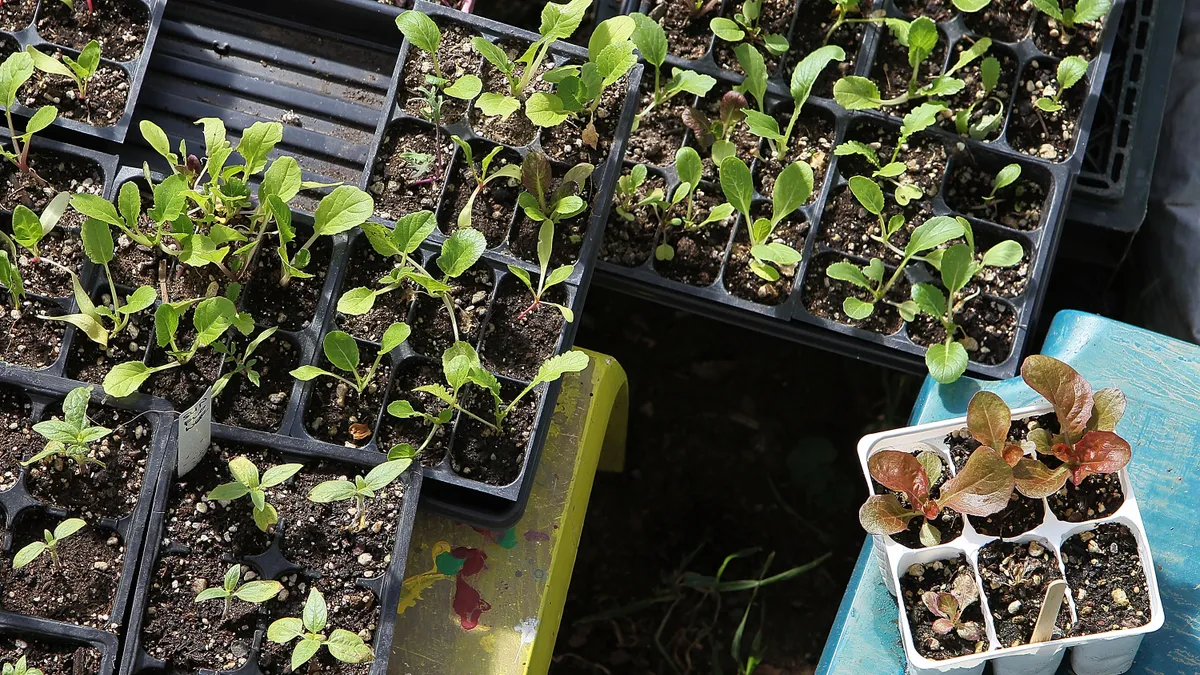A new type of "smart soil" has the potential to allow crops to self-capture water from the surrounding environment, an innovation researchers hope could provide an alternative to traditional irrigation as extensive drought and extreme temperatures threaten farms across the United States.
In July, researchers at The University of Texas at Austin announced the development of a new hydrogel material added to soil that can lead to the growth of larger, healthier plants all while using less water and fertilizer.
The research, published over the summer in ACS Materials Letters, found that radish plants rooted in hydrogel soil saw a 138% increase in stem length while using approximately 40% less water.
Jungjoon Park, a graduate student in the Walker Department of Mechanical Engineering and lead researcher, told Agriculture Dive that the hydrogel uses a certain polymer unlocking plants' ability to "harvest moisture, in a way." By combining the material with soil, plants may be able to better retain water and even keep themselves hydrated in extreme conditions.
The hydrogel works roughly as a reservoir to absorb and retain moisture, releasing water depending on the temperature. The hydrogel's ingredients ensure plants remain irrigated even in arid conditions by absorbing water at night, when it's cooler, and then dispensing it slowly throughout the day.
“With this kind of smart soil, you don't need to actually irrigate as often due to how abundant moisture is, and it allows for the slow release of the fertilized in a controlled manner,” Park said.
UT Texas isn’t a stranger to leveraging hydrogels to assist farmers in dry conditions. In 2023, their researchers announced a smart farming system designed with a copper-based hydrogel that captures excess nitrate waste from fertilizer runoff and turns it into ammonia that can then be reused.
These hydrogels, if they work as promised, could offer a solution to shrinking rivers and groundwater supply threatening farming operations around the U.S. Combined annual losses for the agriculture sector in the West and Midwest caused by drought is more than $1.6 billion a year, according to a report from the Environmental Defense Fund.
Inoka Amarakoon, assistant professor of soil science at the University of Manitoba, is hopeful but slightly skeptical about Park’s research. “The material would need to be applied on a wider scale, with field trials, to assess how successful it can be,” she said.
Still, with the consequences of climate change affecting crops in dire need of moisture, a synthetic polymer added to fertilizer can be useful.
“I can see a need for this kind of hydrogel technology due to how many more droughts we’re seeing from climate change and how our need for food production isn’t slowing down thanks to the rising population,” she added.










